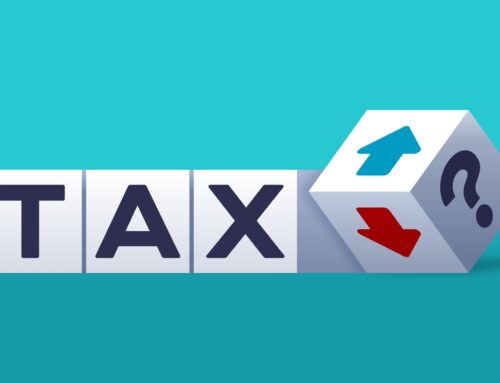
Here come the holidays and everything that goes with them – traveling, cooking, buying gifts, and of course, spending time with the people we love. Even though it’s a busy time of year when finances can end up taking a back seat to decorating and wrapping presents, it’s important to take the time to review where 2021 has left you and prepare for 2022. Here are three things about your taxes that may have changed.
The Charitable Giving Rules Have Changed
’Tis the season of giving, and you may be making a few charitable donations. If you itemize your taxes, you can deduct qualified charitable contributions. Normally, there is a cap on how much someone can donate to charity tax-free—this cap is 60% of a taxpayer’s AGI (Adjusted Gross Income). However, the CARES Act raised this limit to 100% of AGI for the 2020 and 2021 tax years. There is also a provision that allows individual taxpayers who don’t itemize to deduct up to $300 in charitable donations and married couples filing jointly to deduct up to $600 in 2021. However, this year, the tax break is no longer “above the line,” meaning that a charitable donation cannot be subtracted from adjusted gross income.[1]
Will You Contribute More to Your 401(k) Next Year?
As we get ready for 2022, know how much you can contribute to a 401(k), IRA, or other retirement account – some of the numbers will change. The IRA contribution limit won’t go up in 2022; it will remain at $6,000 for workers under 50 and $7,000 for workers 50 and older. However, 401(k) contribution limits are increasing for 2022, from $19,500 to $20,500. Workers 50 and older can contribute an additional $6,500, for a total of $27,000 in 2022. Also, consider if you should do a Roth conversion before the end of the year.
Do You Need to Check Your Withholding?
You should check your withholding at the end of every year, especially as you near and enter retirement. If you’ve retired, keep in mind that pension and annuity payments are subject to withholding just as wage income is. Other examples of non-wage income you may be receiving in retirement are stock dividends, income from side businesses, and interest. If these increase, you may need to adjust your withholding to avoid a large tax bill come tax time. If you picked up a side job, know that you can’t claim the same allowances for both jobs, but you may split allowances between the two.
Don’t wait until 2022 to review your 2021 tax situation. There are several end-of-year planning moves you can make to potentially reduce your 2021 tax bill. Plus, now is the time to look ahead to the new year. Click here to sign up for a time to talk to us at Epstein & White about your goals for 2022.
Please Note: Epstein & White is a tradename. All services provided by Epstein & White investment professionals are provided in their individual capacities as investment adviser representatives of Mercer Global Advisors Inc. (“Mercer Advisors”), an SEC registered investment adviser principally located in Denver, Colorado, with various branch offices throughout the United States doing business under different tradenames, including Epstein & White. Information contained herein is for informational and illustrative purposes only and general in nature. It should not be considered investment advice or a recommendation to buy or sell any type of securities or insurance products and no investment decision should be made based solely on any information provided herein. We provide this information with the understanding that we are not engaged in rendering legal, accounting, or tax services. We recommend that all investors seek out the services of competent professionals in any of the aforementioned areas.
Investment in securities carries a risk of loss, including loss of principal amount invested. Different types of investments involve varying degrees of risk. It should not be assumed that diversification or asset allocation protects a portfolio from loss or that such will produce profitable results. An annuity’s guarantee is subject to the claims-paying ability of the issuing insurance company.




